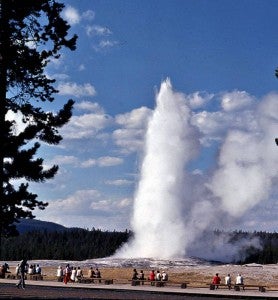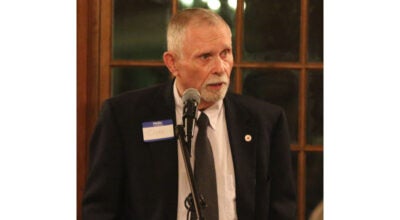Seeking the Yellowstone
Published 11:56 am Friday, January 8, 2016
by James D. Howell
The engines slow, our altitude decreases, the landing gear and flaps are lowered. Touch down is smooth, we taxi in to the terminal at Jackson Hole, Wyoming. I can see the full range of the Grand Teton Mountains, above and to our west. It is a spectacular day.
Frontier Airlines serves this airport as a part of a hop-scotch pattern for smaller cities in this part of the American northwest. We’ve come from Denver and will continue on to West Yellowstone, Montana, my destination. As a commercial airline pilot, I have cockpit jump seat privileges on many airlines through mutual agreement. I’m using that wonderful privilege today with Frontier.
The crews have been gracious and I’ve enjoyed chatting and looking out the window at the passing world below. This is a Convair 440 aircraft, the latest in conversions from the piston powered, post-World War II, Convair 200 series. This aircraft boasts twin turboprop engines, capable of higher airspeeds, payloads and altitudes. It’s a workhorse, used extensively by regional airlines. It’s a little different from the Boeings that I’m used to, but the lower, slower operation is just what I wanted for this trip.
I’m headed to Yellowstone National Park, the very first national park in America.
We disembark passengers and baggage, board new passengers and baggage, and launch back into the brilliant blue for the short trip to West Yellowstone. It’s about 80 miles airport to airport, barely enough time to get the landing gear up and back down in time for landing in my normal flying job.
Today, things are slower and the crew takes a few extra minutes to do a little sightseeing for the passengers and me. We slip by the visitors center at Old Faithful and swing a little wider in the landing pattern to see the trace of Firehole River. I’m excited at the prospects.
This is the last week that rental cars will be available at Yellowstone. The office closes and the cars will be moved elsewhere for the winter. I did check and reserve one before I left Houston. There is no line at the counter. I gather a couple of maps, get a couple of questions answered and set off to the visitors center at Old Faithful Geyser. Traffic is light to nonexistent.
Most of the cabins have been closed for the winter; I check into one of the remaining. It seems that the park has a small, but increasing market for winter visitors. This set of cabins is close by the main center and has walking trails that connect with the center and other trails through the geyser area. This will work great for me. Parking is close by the door and I can hike as much as I can stand around the geyser basin.
Yellowstone National Park sits on top of a geological feature called a “hotspot.” As the earth’s mantle moves, magma sporadically rises to the surface. The Hawaiian Islands are an example of this phenomenon. The earth surface of Yellowstone’s hotspot is a volcanic caldera roughly 35-40 miles across, somewhat irregular in shape. The last eruption from this volcanic complex was about 170,000 years ago. That area is now a part of Yellowstone Lake.
The rest of the geothermal features of the park have been around a little longer. Geologists tell us that it is active. (I didn’t need a geologist to see that.) Steam rises from thermal springs and geysers of all sizes.
I spend part of the day waiting for Old Faithfull’s eruptions; a schedule is written on a board at the lodge/visitors center. It really is awesome. Hot water and steam shoot into a clear blue sky, sometimes a little larger and taller than others. I hike the well-traveled, raised boardwalk across and around the main part of the upper geyser basin. I stop for a picture alongside the Beehive geyser; it’s a smaller, constantly bubbling geyser shaped like its namesake. I climb a short hill on the trail for an overlook.
Back at the Old Faithful Inn, I admire the rustic, massive timbers of the building itself. Constructed in 1903-04, the main supports are mostly lodge pole pine, selected for length and shape. Corner bracings and decorative finishes are wood combed from the local area; a massive stone fireplace centers the open visitors lobby. Guest rooms occupy wings on either side of the central structure.
Evening finds me driving alongside Firehole River. Many parking spots and designated walkways make sightseeing easy. I stop, walk, and take pictures for future memories. Bison wander the meadows.
Night comes reluctantly. Tomorrow, I’ll venture north.
JAMES D. “ARCHIE” HOWELL is a Southampton County native and 1955 graduate of Franklin High School. He can be reached at archiepix@kingwoodcable.com.






